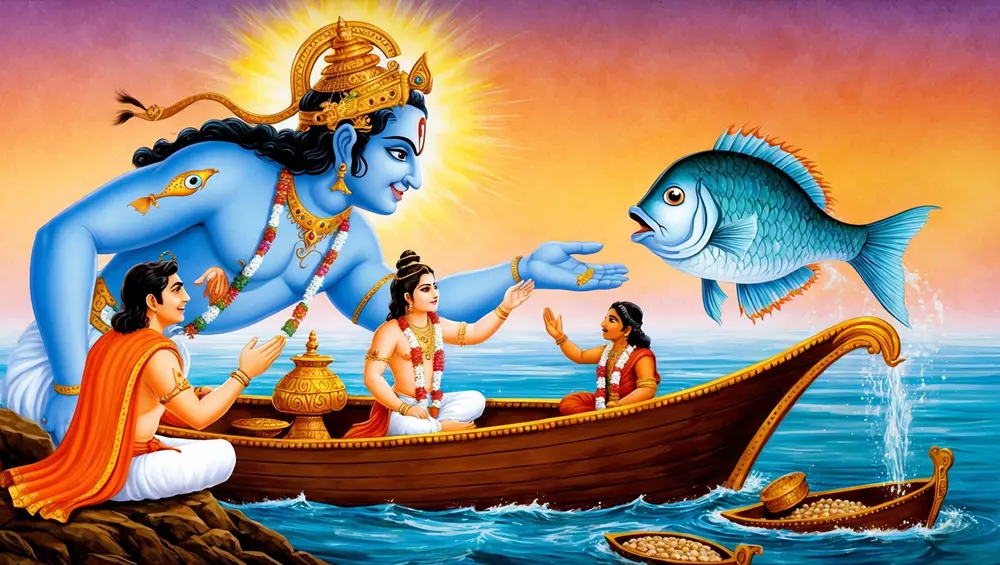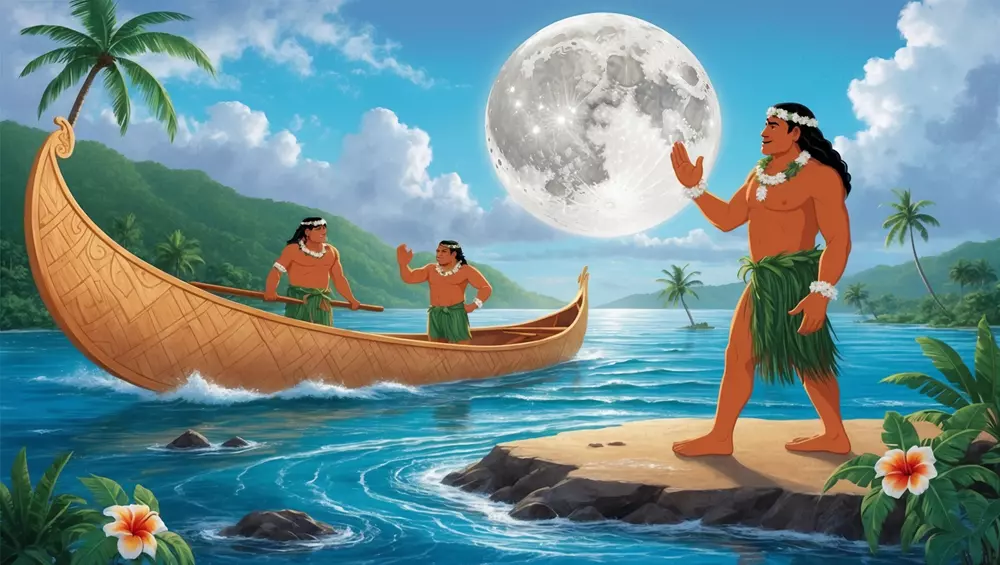Flood myths are everywhere. From ancient Mesopotamia to the Americas, nearly every culture has a story of a deluge that wiped out humanity, only to bring it back. These tales aren’t just about destruction; they’re about rebirth and divine balance. The flood myth often signifies a fresh start, a cosmic reset where humans face judgment and the world is cleansed.
In many of these myths, humanity survives thanks to divine intervention, cleverness, or sheer determination. Flood myths emphasize the power of water—a force that nurtures and destroys, symbolizing the thin line between life and oblivion. Across cultures, the flood myth conveys a shared fear of nature’s wrath and a hope for redemption.
Mesopotamian Origins: The Epic of Gilgamesh
The Epic of Gilgamesh is one of the oldest and most famous flood myths. Written in ancient Mesopotamia around 2000 BCE, this tale centers on Utnapishtim, a man who receives divine warning of a devastating flood. The god Ea whispers to Utnapishtim, urging him to build a boat and gather “the seed of all living things.” The flood comes, wiping out the world, but Utnapishtim and his boat survive, landing on a mountaintop.
“Build a boat, abandon possessions, seek life!” (The Epic of Gilgamesh)
This story is powerful because it echoes across centuries, laying a foundation for later flood tales, including Noah’s Ark. Utnapishtim’s survival becomes a testament to resilience, and his reward—immortality—shows the gods’ recognition of his piety and bravery. Mesopotamian flood myths like Gilgamesh set the stage for countless other stories, uniting people with their understanding of divine justice and mercy.
The Biblical Flood: Noah’s Ark
Perhaps the most well-known flood myth is the story of Noah’s Ark, found in the Book of Genesis. In this tale, God sees humanity’s wickedness and decides to cleanse the earth. But He saves Noah, “a righteous man, blameless among the people,” instructing him to build an ark and save his family and pairs of all animals. The flood lasts forty days, submerging the world and leaving Noah’s family as the sole survivors. When the waters recede, God makes a covenant with Noah, symbolized by a rainbow, promising never to destroy the world by flood again.

“Then God said to Noah, ‘I have set my rainbow in the clouds, and it will be the sign of the covenant.’” (Genesis 9:13)
The story of Noah resonates with themes of faith, obedience, and divine promise. The flood is both punishment and redemption, an act that emphasizes God’s justice and mercy. It’s no wonder this story remains iconic, echoing themes seen in Mesopotamian and later Christian texts.
Sumerian Mythology – Eridu Genesis
The Eridu Genesis is one of the earliest known flood myths, dating back to Sumer. In this story, Ziusudra learns from the god Enki about an impending flood meant to cleanse the earth. Following divine guidance, Ziusudra builds a boat and survives, offering thanks to the gods once the waters recede. The story highlights divine mercy and the importance of devotion.
“Ziusudra was granted life for honoring the gods.” (Eridu Genesis)
The Eridu Genesis underscores the Sumerians’ belief in divine order and justice, setting a precedent for later flood narratives, including the Epic of Gilgamesh. Through Ziusudra’s faith, the story emphasizes humanity’s dependence on divine wisdom.
Greek Mythology: Deucalion and Pyrrha
In Greek mythology, the story of Deucalion and Pyrrha tells of a great flood sent by Zeus to cleanse a corrupt humanity. Unlike Noah, Deucalion and Pyrrha don’t receive explicit instructions from the gods. Instead, they take refuge on a boat and survive the flood. After the waters recede, they seek guidance at the temple of Themis, who instructs them to “throw the bones of their mother over their shoulders.” Interpreting “mother” as Earth, they cast stones that transform into the new human race, repopulating the world.

“Throw the bones of your mother behind you.” (Ovid, Metamorphoses)
This myth reflects Greek values of resourcefulness and interpretation, where survival depends not on divine instructions but on the hero’s wits. Deucalion and Pyrrha’s story carries the essence of resilience and the Greeks’ faith in wisdom over simple obedience. Their flood myth adds another layer to the global tapestry of tales, showing how each culture uniquely envisions survival and rebirth.
Indian Mythology – Matsya and Manu
In Hindu mythology, Matsya, an avatar of Vishnu, warns Manu, the first man, of an impending flood. Matsya, appearing as a small fish, asks Manu for protection from larger fish. Manu obliges, but the fish grows miraculously, revealing its divine nature. Matsya instructs Manu to build a boat, gathering the seeds of all living beings to ensure survival. When the flood comes, Matsya guides the boat through the waters until the earth is restored.

“Prepare a boat and gather all seeds, for a flood shall cover the world.” (The Matsya Purana)
The Hindu flood story is less about punishment and more about preservation and divine guidance. Vishnu’s intervention emphasizes the continuity of life and the renewal of humanity. In this narrative, the flood symbolizes cyclical renewal rather than strict divine judgment, mirroring Hindu beliefs about reincarnation and cosmic cycles.
Chinese Mythology – The Great Flood of Gun-Yu
In ancient China, the Great Flood isn’t about a single flood event but rather years of relentless flooding that threaten humanity. Instead of seeking divine intervention, Chinese myths celebrate human ingenuity. Yu the Great dedicates himself to controlling the floodwaters, carving channels and creating dams to divert the water. Through years of effort, he finally tames the flood, earning respect and becoming a legendary ruler.
“The great Yu diverted rivers, calmed the waters, and saved his people.” (Records of the Grand Historian)
This Chinese myth diverges from others by focusing on human effort over divine intervention. Yu’s dedication and practical wisdom represent a belief in human resilience, portraying the flood as a challenge to overcome rather than a punishment. The Great Flood myth serves as a testament to human potential, resilience, and the importance of harmony with nature in Chinese culture.
Norse Mythology – Bergelmir and the Giants
In Norse mythology, a cosmic flood emerges not from rain or gods but from the death of a giant. When the primordial giant Ymir is slain by Odin and his brothers, his blood floods the world, drowning most of the frost giants. However, Bergelmir and his wife escape in a boat and survive, repopulating their race. This flood myth reflects the Norse worldview of an ever-present cosmic struggle between creation and destruction.

“When Ymir fell, his blood created a deluge, drowning all but two.” (Prose Edda)
The Norse flood myth has a distinctly violent tone, linked to the chaotic nature of Norse cosmology. Unlike other flood narratives, this myth doesn’t involve divine judgment; instead, it highlights survival amid the brutal forces of nature and fate. Bergelmir’s survival represents resilience in the face of cosmic upheaval, fitting the Norse view of existence as a constant battle against entropy.
Mesoamerican Mythology – The Aztec Flood
The Aztec flood story features the god Tezcatlipoca, who decides to destroy humanity due to their corrupt nature. He sends a flood, sparing only Coxcox and his wife, who survive by floating on a hollowed log. When the flood recedes, they are instructed by the gods to repopulate the earth. In Aztec culture, this flood symbolizes both punishment and the cyclic nature of life and death.
“The gods saved Coxcox, allowing him to begin the world anew.” (Codex Chimalpopoca)
The Aztec flood myth is filled with cosmic drama, with the gods continually creating and destroying humanity in a cycle of renewal. The flood represents divine authority over life and death, reflecting Aztec beliefs in the impermanence of human life and the inevitability of cosmic cycles. It’s both a cautionary tale and a reminder of the gods’ ultimate control.
Hawaiian Mythology – The Story of Nu‘u
In Hawaiian mythology, Nu‘u is the protagonist of a flood story with parallels to Noah. Nu‘u, a righteous man, builds a large canoe to survive a great flood sent by the god Kāne. After the waters recede, Nu‘u offers thanks to the moon by mistake, but Kāne descends, explaining that it was he who saved Nu‘u. This Hawaiian tale emphasizes gratitude, humility, and the importance of honoring the correct deity.

“Kāne spoke to Nu‘u, reminding him of the true god’s grace.” (Hawaiian Oral Tradition)
Nu‘u’s flood story reflects Hawaiian values of respect and humility before the gods. Unlike other flood myths, this story is a lesson in proper reverence rather than strict punishment. The flood in Hawaiian mythology teaches that survival is as much about faith as it is about physical preparedness.
Indigenous Australian Mythology – Tiddalik the Frog
In Australian Indigenous mythology, the flood myth is told through Tiddalik the Frog. This tale flips the usual narrative; instead of a divine flood, it’s Tiddalik’s greed that causes a disaster. Tiddalik drinks all the water, leaving the land dry and barren. The other animals, desperate for water, make Tiddalik laugh, causing him to release all the stored water in a massive flood that restores the land.
“Tiddalik’s laughter brought water to the parched earth.” (Australian Indigenous Folktales)
This myth teaches balance in nature, where greed disrupts harmony, and laughter brings renewal. The story serves as a reminder of community resilience, with creatures uniting to restore balance through creative means.
Why Flood Myths Resonate Worldwide
Flood myths, though culturally distinct, reflect universal human concerns—destruction, renewal, divine judgment, and survival. These myths aren’t just tales of survival; they represent humanity’s attempt to understand natural disasters, morality, and cosmic order. Analyzing the similarities and differences in these myths offers insight into why floods resonate across such diverse cultures.
One key similarity is the flood as a tool of divine retribution or cosmic reset. For many cultures, floods symbolize a cleansing force. In Mesopotamian, Hebrew, and Aztec myths, divine beings use floods to punish or correct humanity’s failings, highlighting the need for moral or spiritual alignment. This idea likely stems from humanity’s vulnerability to nature; ancient societies experienced destructive floods and saw them as messages from the divine. Consequently, the flood myth serves as a reminder of humanity’s place in the cosmic order.
Yet, differences in human agency across these myths reveal varied cultural beliefs. In many Western and Middle Eastern flood stories, humans survive through divine intervention or moral worthiness, such as Noah or Utnapishtim. Here, survival is a gift, emphasizing obedience and devotion. In contrast, stories like the Chinese Great Flood focus on human ingenuity and resilience. Yu the Great’s efforts to control the flood through engineering showcase a cultural belief in human ability to harmonize with nature rather than relying solely on divine aid. This variation reflects the values of each society: divine reliance in some cultures versus a partnership with nature in others.
The symbolism of water itself differs significantly. Water, in most flood myths, represents both life and destruction. In Hindu and some Indigenous Australian myths, water plays a cyclical role, aligning with beliefs in rebirth and renewal rather than simple punishment. For Hindu cultures, for instance, water is central to the cosmic cycle, an agent of transformation that washes away the old to birth the new. This aligns with Eastern philosophies of reincarnation, contrasting sharply with Western interpretations of water as primarily punitive.
A fascinating point of comparison is the role of survival as cultural resilience. Some flood myths depict survivors repopulating or regenerating the earth, as seen in Greek and Indigenous myths. Survival here isn’t just about escaping death; it’s about cultural continuity, using the myth to pass on ideals of resilience, ingenuity, or reverence for the gods. The Hawaiian tale of Nu‘u, for example, underscores humility and gratitude. Such differences highlight how floods became moral teachings, with lessons tailored to each culture’s worldview.
Common archetypes, like the hero or the ark, recur across myths. Boats and arks symbolize shelter and continuity, transcending time and culture. The flood myth, therefore, isn’t just about water—it’s a vessel carrying a culture’s hopes, fears, and moral codes across generations. These similar elements underscore shared human concerns, while the unique details—why the flood happens, how humans respond—reflect each society’s specific beliefs and environment.
Ultimately, flood myths endure because they tackle universal fears and questions. Despite cultural divides, the myth allows each society to explain forces beyond human control, showing that, while our methods vary, humanity’s need to make sense of catastrophe remains constant.
Sources
Encyclopaedia Britannica – Flood Myth
Overview and detailed analysis of various flood myths, from the Bible to ancient Mesopotamian stories.
Big Think – Flood Myth origin
Insight into the recurring flood myth across different cultures and possible reasons for its widespread presence.
World History Encyclopedia – Ancient flood stories from around the world
Articles on the historical context and cultural significance of flood myths worldwide.https://bigthink.com/high-culture/flood-myth-origin/
Metropolitan Museum of Art – The flood
Examination of flood myths in Mesopotamian and biblical contexts, including Gilgamesh.
Wikipedia – Flood Myths – Flood Myth
Comprehensive list and descriptions of flood myths from various cultures, useful for comparative research.






